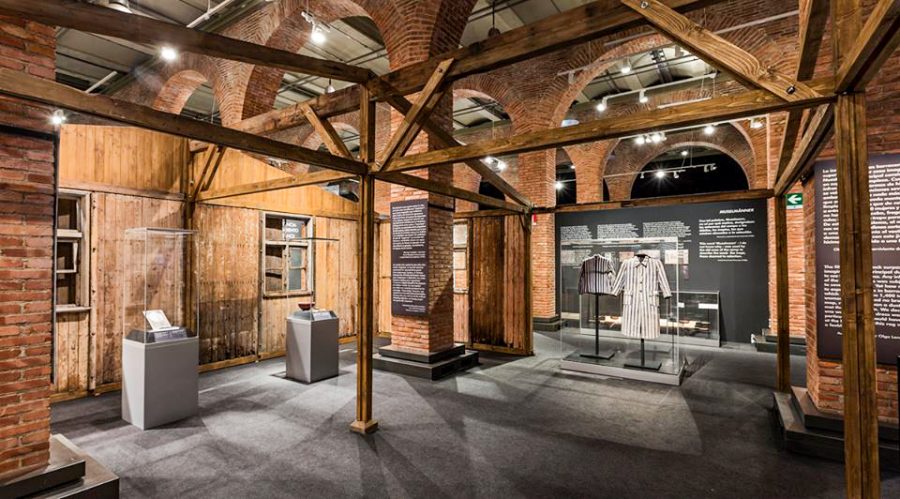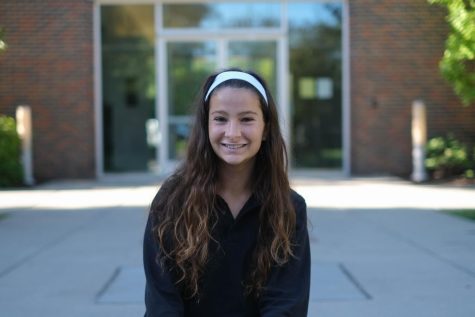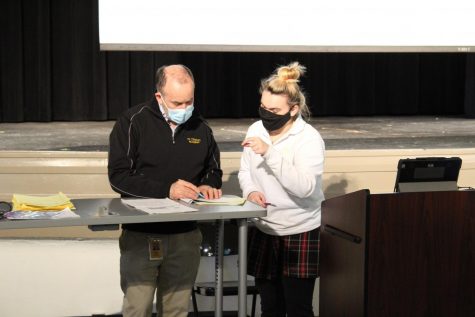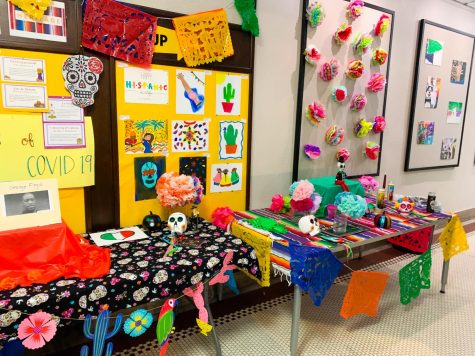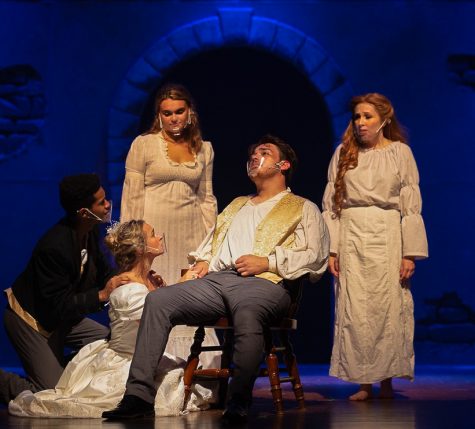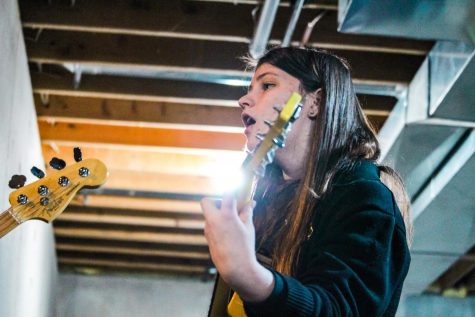Not Long Ago. Not Far Away
Union Station is hosting the exhibit “Auschwitz. Not long ago. Not far away.” Coming summer 2021. Holocaust survivor Judy Jacobs and historian Dr. Shelly Cline give their ideas and insight on the exhibit.
April 27, 2021
Auschwitz was one of many concentration camps during the Holocaust which lasted 1933 to 1945. More than 6 million Jews and 5 million others, including homosexuals, intellectually disabled, and many more died in the Holocaust according to History.com. In June 2021, Union Station will host “Auschwitz. Not long ago. Not far away.” The exhibit features 700 original objects and 400 photographs from over 20 museums around the world. This exhibit will only make two stops in North America —Union Station in Kansas City and New York’s Museum of Heritage, where it is currently located.
Union Station’s website states: “Union Station Kansas City is honored to host this significant story and presentation of artifacts.”
Since many personal stories will be told through the visuals of this exhibit, a Kansas City Holocaust survivor Judy Jacobs gives insight on the imprint she hopes it leaves on the community.
“I think this will be highly educational, and that’s what I’m hoping — that people will get a shock and realize this is what people can do when they are insensitive and uncaring,” Jacobs said.
Jacobs was in first grade when she was taken from her home in Budapest, Hungary and brought to Bergen Belsen, a concentration camp in Northern Germany. Although Jacobs never spent time in Auschwitz, her immediate family was affected by it.
“The Nazi’s kept pretty good records,” Jacobs said.
Due to their record keeping abilities, Jacobs was able to discover the fate of her grandparents.
“I recently found out that my grandparents, my mother’s parents, were gassed the same day we left Budapest.”
The death of her grandparents took place in a completely different concentration camp while she was in an overcrowded cattle car on the way to Bergen Belson. At least 19,700 people were killed at Bergen Belsen, according to the Holocaust Educational Trust. According to History.com, 1.1 million people were killed in Auschwitz.
The exhibit displays an inside view on the Nazi party and the terrors they executed on the innocent.
Union Station’s website describes the unparalleled opportunity visitors are given to confront the human evil shown throughout the Holocaust. Jacob’s is all to familiar to the evil shown throughout the Holocaust as she recalls multiple experiences with Nazis.
“They always yelled obscenities,” Jacobs said. “One of their favorite expressions was ‘subhuman.’ And I was, at that point, 7 years old, I began to wonder if I was a subhuman.”
After around six months in the camp, Jacobs was released. She recalls hearing church bells on her way to Switzerland after the release.
“It was a sign of beauty and peace and normal,” Jacobs said.
“Auschwitz. Not long ago. Not far away. Explores the dual identity of the camp as a physical location– the largest documented mass murder site in human history.” The Official Website for Union Station states.
Dr. Shelly Cline, historian and director of education, has worked with the Midwest Center for Holocaust Education and with this exhibit in particular. She visited the exhibit in New York during February 2020. She was astounded by the objects they had shown and was most fascinated by a physical model of Auschwitz.
“To me, seeing this model of the camp was really interesting, because it gives people a sense of the size and geography of the space,” Cline said.
Cline believes those who visit the museum will be moved by the personal objects at the exhibit. Some other artifacts include childrens toys and a commander’s desk. Alongside showing the physical aspect of Auschwitz, it also gives a deeper look as to what was going on during the Holocaust.
“For most people, this is going to be the most intimate experience that they will have with these Holocaust spaces,” Cline said.
While she has traveled all around the world and visited multiple concentration camps, including Auschwitz, she recognizes they’re not easy to reach, and that this exhibit could be the limit on Holocaust exploration for most people. She urges people of all ages to attend the exhibit.
“Take a weekend, go with your parents. Go with your friends,” Cline said.
She believes once you are in the exhibit, it’s important to stay present the whole time. She believes the viewer should take a deeper look into each object brought by the survivors from the concentration camps.
“Think about these objects and who owned them; why would they take them with them?” Cline said. “Just allow yourself some time to reflect as well.”
Jacobs and Cline both stressed the importance of young people exploring and processing this exhibit.
“The world needs to be aware, because hopefully, this will teach this generation what not to do,” Jacobs said.



